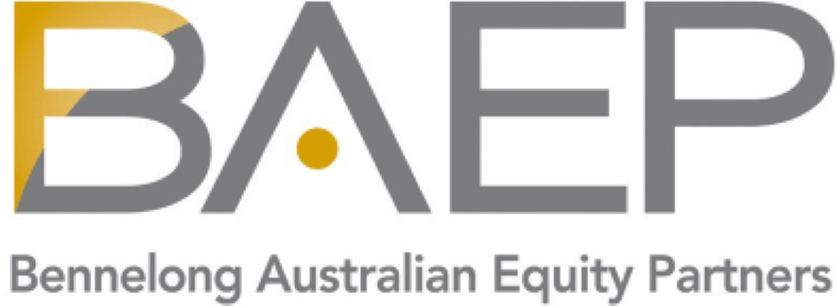Lonsec's Peter Green: Why it pays to be cynical
For someone who spends his days assessing the performance of the investment industry's mightiest, Lonsec's Peter Green is refreshingly candid, approachable, and down-to-earth.
And yet, perhaps surprisingly, Green, who has worked for the funds research and ratings house for more than 13 years, shares that his biggest tip of advice for investors is that it can pay to be cynical when assessing fund managers.
"Typically, a lot of the strategies you see are similar. It’s usually worthwhile to stand back and be a bit more cynical when you hear someone say 'This time, it’s different.' There are a lot of different mousetraps in the market and it's definitely not different this time," he says.
In this interview, Green shares the two long-term thematics that he believes will drive returns over the coming years and provides his thoughts around the elephant in the room: inflation.
Plus, he shares why he believes mid-caps are underutilised in investors' portfolios, arguing these stocks can be more diversified, provide better downside protection, and can aid investors with higher EPS growth than their larger and small-cap peers.
Edited Transcript
James Marlay: What’s the big issue that you and your colleagues are spending the most time debating right now?
Peter Green: The elephant in the room is obviously inflation. We’re all really trying to understand whether that's, as the Fed and central banks say, a transitory issue or whether we've actually got a genuine structural change that will lead to longer-term inflation breakouts and other effects. And then the natural question, as an investment committee or research team, is ‘what do you do next?’ How do you manage that inflation risk best so that you make sure you don't go all in, and you overreact or under-react? That's what is really driving our conversations.
James Marlay: How are you thinking about inflation – have you assigned some probabilities to this and what are some of the potential endpoints?
Peter Green: Plainly, there's a price inflation inflection and we've just gone through COVID. It's disrupted the world in ways that we are only just starting to understand. And I see that in terms of both production capacity and the flow of human capital, because of closed border policies and the like. So, we’re just starting to get some price inflation. It's just a natural outcome.
The market is trying to understand factors such as fiscal stimulus and whether that will become a longer-term structural driver of inflation. And that's obviously going to have a lot of implications on various things including company valuations and different types of asset classes.
It’s something that everyone's got to form a view on, but it's not quite clear what the future holds.
James Marlay: How are you thinking about inflation and some of these impacts flowing through to portfolio construction?
Peter Green: The classic thing that's playing out in equity markets is the great rotation from the growth style into value.
If you take the argument that inflation is a consequence of improving economic factors, then your typical value manager is going to be more overweight cyclical industries, which are going to be a real beneficiary.
On the other hand, a growth manager will have a lot of what we call “long-duration assets”. And you just have to look at a (discounted cash flow model) DCF and put a higher discount rate in there and the valuation comes down. So, you're seeing that rotation into value.
The other thing you have to consider is how to hedge against the potential that inflation gets worse in terms of expectations and consensus. The classic hedges are things like hard assets – such as direct property, listed property or listed infrastructure – they've tended to be very good hedges over time.
James Marlay: If we think about market cycles in a simple schematic of going from pessimism to scepticism, optimism, and then euphoria, where do you believe we currently are on that scale?
Peter Green: I think we're at the optimistic stage. But I think there's a caution to it and you have to realise that we're talking about inflation here. And there’s also things like geopolitics, which we can’t fully understand, including the COVID-19 risks still playing out tragically in various countries, including India.
So, I think there's a cautious optimism. And the optimism still comes from the fact that the bond market is at historic lows and that's good for the equity market.
But we’ve also had elements of euphoria, which we saw last year inside big tech. We're also seeing it now in cryptocurrencies and some other areas. But that's come back a fair bit now, with the big tech stocks correcting from their highs in line with concerns around inflation. So, I think we're shifting from pockets of euphoria to an optimistic optimism, but caution is definitely creeping in.
James Marlay: If you look forward over the next five years or so, what are some of the big themes that you think investors should watch for?
Peter Green: Over the long run, my view of the world is focused on some of these “structural disruptive drivers,” which are going to be driving longer-term returns.
I look at digitalisation and automation as something like a “fourth industrial revolution," I see that as a structural change.
Taking a bottom-up view of what companies are doing, they're investing in automation and in digitalisation. I'm not a computer expert, but the technology has got to the point where supercomputers can process so much data and I don't see that going away. I genuinely believe that is a structural driver and will be a driver of portfolio returns.
Another one is the ongoing rise of the middle class in Asia and other emerging regions and market. But especially in Asia, I see that as a big long-term structural driver of returns. It means that the top industrial companies in those markets do better than those in developed markets, where we don't have that type of structural driver.
James Marlay: Can you give me some examples of funds that have been through the Lonsec process and provide access to those longer-term thematics you've just discussed?
Peter Green: Automation and digitalization tend to be the domain of the growth manager and especially the high growth managers. They've had a big correction of late, but that's something short term and they’ve just been through a period of pretty high valuations. So it was natural that, as we get some different narratives in the market, they’d start to come off.
In an Australian equity context, I’d point to growth managers such as Hyperion or Bennelong. Or in a global equity context, there’s Baillie Gifford and again Hyperion, which also has a global equity strategy. Those managers can really tap into the companies that are driving the disruptive innovation curve.



And for Asian exposure, there’s the Betashares Asia Technology Tigers (ASX: ASIA) fund, which is something of an “Asia tech all-stars” ETF. On the actively managed side there, I’d point to strategies from the likes of GQG.

James Marlay: What's an asset class that you think is under-appreciated and has a really important role to play in portfolios?
Peter Green: I think mid-caps is an area that is underutilised in portfolios. This is often because they tend to have higher EPS growth profiles than large caps, on average. We use the Australian equity market, the top 20 banks and miners, whereas in mid-caps there are many industrial companies that are actually growing as businesses. But mid-caps also tend to be more liquid than the small-cap end, so they have a better defensive profile. Small caps can be great for long-term investors but sometimes suffer from big market drawdowns.
So, especially when viewed from an Australian context, mid-caps tend to be more diversified without the big overweighting toward banks and miners – which, let's face it, brings some macro risks that may be unintended bets for investors.
James Marlay: If you were able to offer yourself some advice back at the start of your career, which would help you more consistently pick good funds, what’s the one piece of advice you’d give?
Peter Green: When someone says this time it's different, more often than not, it's not.
And the other thing is, there's no such thing as a perfect strategy or a unique strategy. Typically a lot of the strategies you see are similar. It’s usually worthwhile to stand back and be a bit more cynical when you hear someone say, “this time, it’s different.” There's a lot of different mousetraps in the market and it's definitely not different this time, from a product point of view.
And I know you said one, but another would be not to place much emphasis on past performance. It's such an obvious thing to say but the manager that has been winning over the last 12 months isn't necessarily the one who will win in the year ahead.
Never miss an insight
Enjoy this wire? Hit the ‘like’ button to let us know. Stay up to date with my content by hitting the ‘follow’ button below and you’ll be notified every time I post a wire. Not already a Livewire member? Sign up today to get free access to investment ideas and strategies from Australia’s leading investors.
Four reasons to register for Livewire’s 100 Top-Rated Funds Series
Check it out now for:- Access to a list of Australia’s 100 top-rated funds
- Detailed fund profile pages to help you compare performance, fees, and philosophy
- Exclusive in-depth interviews with expert researchers from Lonsec, Morningstar and Zenith.
- One-on-one videos and articles with 16 of Australia’s best fund managers
3 topics
4 funds mentioned

